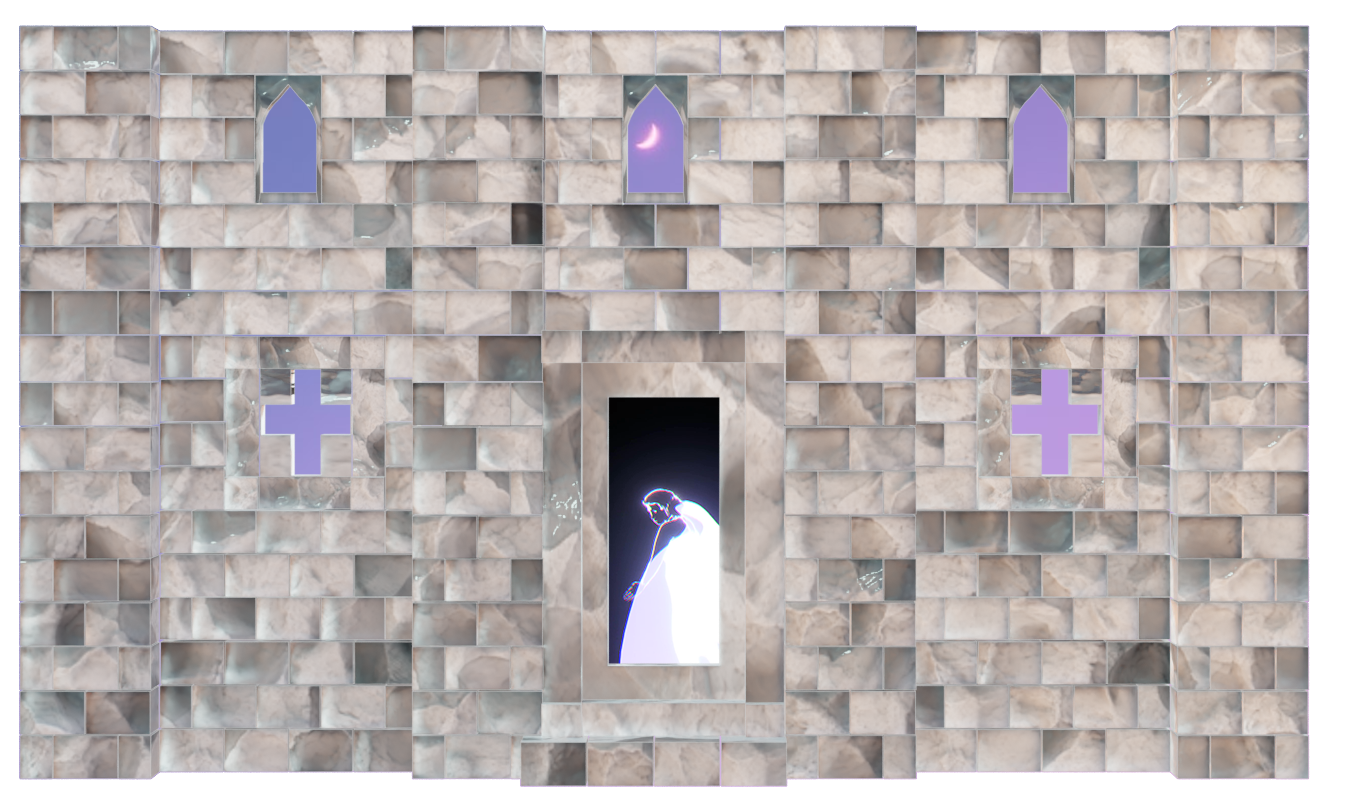The Museum of Artifice
Sharjah Architecture Triennial, Sharjah, UAEMiriam Hillawi Abraham, 2023

The Museum of Artifice, 2nd Sharjah Architecture Triennial, Sharjah, UAE
Photo by Tom Ravenscroft for Dezeen
The Museum of Artifice explores architectural conservation as a mode of storytelling and mythmaking, complicating notions of heritage and dissolving the limits of territory. Stemming from the larger project of The Abyssinian Cyber Vernaculus, the errant digital twin of the Lalibela Churches in Northern Ethiopia, the work co-mingles with (and at times confronts) the resident myths of heritage in Sharjah. The practice of preservation and repair is entwined with narrative.
Why do we choose to demolish some structures and rebuild or preserve others?
In doing so, which myths and stories are we intentionally building in order to justify the legitimacy of our past?
In the Museum of Artifice the deceitfully authentic facade of Beite Abba Libanos is re-fabricated here using locally sourced salt blocks. Salt at once ubiquitous and scarce, common in some contexts and precious in others, becomes the medium, the building block of this story of relation and restitution. The use of salt in this context directly relates to the Triennial’s themes of scarcity and impermanence. In the same way that early settlers of Sharjah used “coral stone”, salt blocks were also used in other regions of material scarcity such as the use of mortar bonded salt blocks found in the Danakil Depression of Ethiopia.

Reconstructed facade built from Pink Himalayan Salt Blocks / 2023
The Museum of Artifice, 2nd Sharjah Architecture Triennial, Sharjah, UAE
“
Je bâtis a roches mon langage.”
(I build my language with rocks.)
- Eduard Glissant, L’intention Poetique
Thus the alien architecture arrives in Sharjah, far from its home on the other side of the Red Sea, mutating from stone to salt, carrying with it, its attendant myths and spectres. Under this guise, it operates as a world nested within another, singular yet porous to its surroundings.
Within this space violent dispossession is confronted through the digital fabrication and recontextualization of replicas of looted Abyssinian artifacts, specifically ecclesial instruments commonly used in the sacred rites of the Ethiopian and Eritrean Orthodox Church. The replicas featured in the work are those of artifacts still held in Western museums, who have stalled or refused restitution efforts.

Censer (Incense Burner) Salt fossilized re-fabricated looted artifact / 2023
The Museum of Artifice, 2nd Sharjah Architecture Triennial, Sharjah, UAE




Concept Design for Installation / 2022-23
The Museum of Artifice, 2nd Sharjah Architecture Triennial, Sharjah, UAE


The Museum of Artifice, 2nd Sharjah Architecture Triennial, Sharjah, UAE
Architectural heritage is often seen as permanent, something to reference to assert belonging or construct a collective identity, but it is far from permanent as it can be physical destroyed by a tremor in the earth or an act of violence and can be endowed with new meaning and intent by those who presume authority of it, letting it belong to some while blocking others from being able to ground their identities in it. These spaces are haunted. Those who have turned to dust long ago can return to us in the guise of myths, myths that have undone their mortality and at times morality. And such myths seep into these architectures, and Lalibela having mutated from stone to salt, arrives in Sharjah, carrying with it its attendant myths and spectres. The Museum of Artifice plays with this delicate impermanence as with each visitor the surface of the salt blocks will degrade gradually into dissolution, as every touch, breath and whisper melts away at the wall’s surface.


Reconstructed facade built from Pink Himalayan Salt Blocks / 2023
The Museum of Artifice, 2nd Sharjah Architecture Triennial, Sharjah, UAE